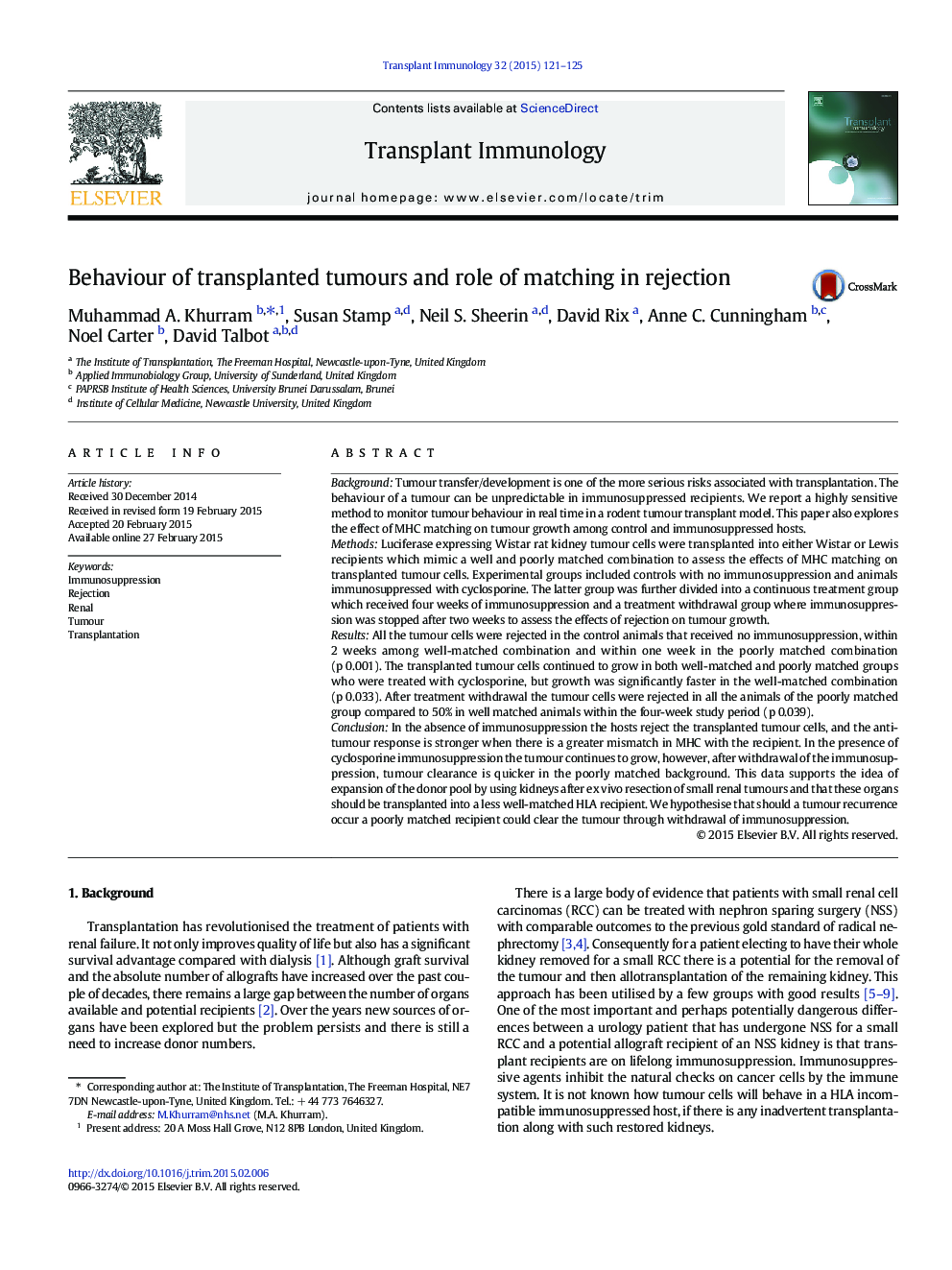| کد مقاله | کد نشریه | سال انتشار | مقاله انگلیسی | نسخه تمام متن |
|---|---|---|---|---|
| 3392064 | 1221187 | 2015 | 5 صفحه PDF | دانلود رایگان |
• Without immunosuppression rapid rejection of tumour load from both strains
• This rejection was significantly stronger in poorly matched group.
• Continued unchecked growth of tumour with cyclosporine immunosuppression
• This growth of tumour under cyclosporine was stronger in well matched animals.
• After treatment withdrawal, complete and stronger rejection of tumour in poorly matched animals
BackgroundTumour transfer/development is one of the more serious risks associated with transplantation. The behaviour of a tumour can be unpredictable in immunosuppressed recipients. We report a highly sensitive method to monitor tumour behaviour in real time in a rodent tumour transplant model. This paper also explores the effect of MHC matching on tumour growth among control and immunosuppressed hosts.MethodsLuciferase expressing Wistar rat kidney tumour cells were transplanted into either Wistar or Lewis recipients which mimic a well and poorly matched combination to assess the effects of MHC matching on transplanted tumour cells. Experimental groups included controls with no immunosuppression and animals immunosuppressed with cyclosporine. The latter group was further divided into a continuous treatment group which received four weeks of immunosuppression and a treatment withdrawal group where immunosuppression was stopped after two weeks to assess the effects of rejection on tumour growth.ResultsAll the tumour cells were rejected in the control animals that received no immunosuppression, within 2 weeks among well-matched combination and within one week in the poorly matched combination (p 0.001). The transplanted tumour cells continued to grow in both well-matched and poorly matched groups who were treated with cyclosporine, but growth was significantly faster in the well-matched combination (p 0.033). After treatment withdrawal the tumour cells were rejected in all the animals of the poorly matched group compared to 50% in well matched animals within the four-week study period (p 0.039).ConclusionIn the absence of immunosuppression the hosts reject the transplanted tumour cells, and the anti-tumour response is stronger when there is a greater mismatch in MHC with the recipient. In the presence of cyclosporine immunosuppression the tumour continues to grow, however, after withdrawal of the immunosuppression, tumour clearance is quicker in the poorly matched background. This data supports the idea of expansion of the donor pool by using kidneys after ex vivo resection of small renal tumours and that these organs should be transplanted into a less well-matched HLA recipient. We hypothesise that should a tumour recurrence occur a poorly matched recipient could clear the tumour through withdrawal of immunosuppression.
Journal: Transplant Immunology - Volume 32, Issue 2, March 2015, Pages 121–125
